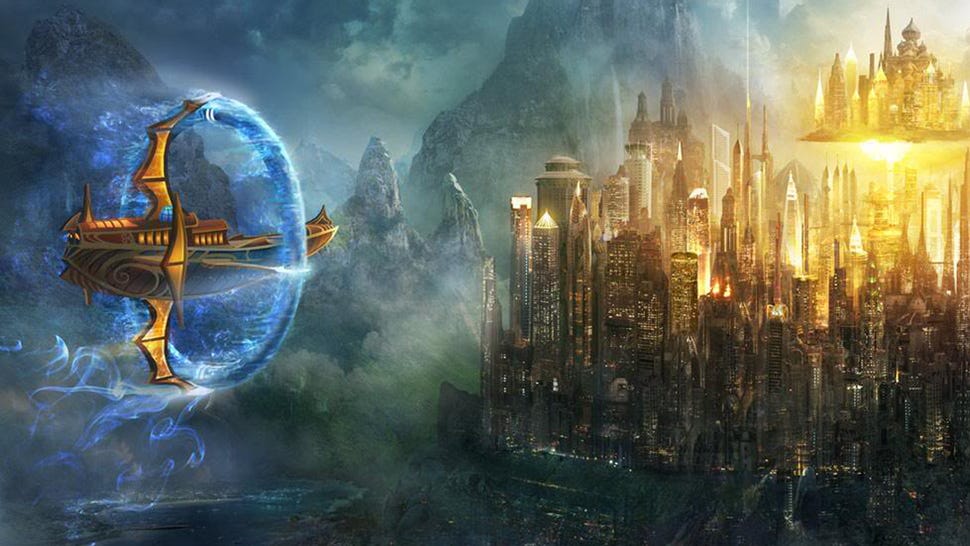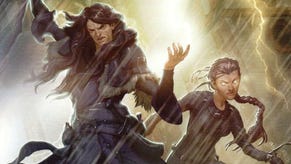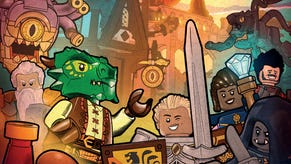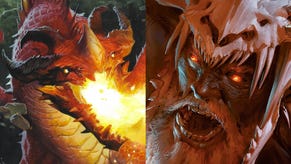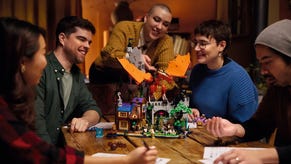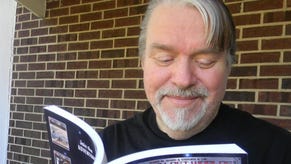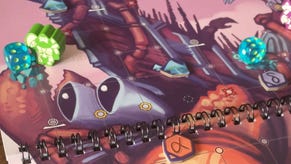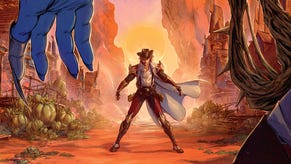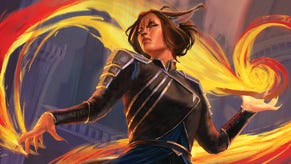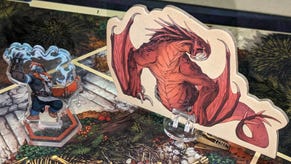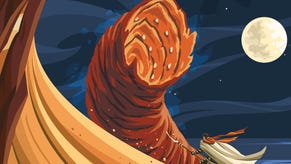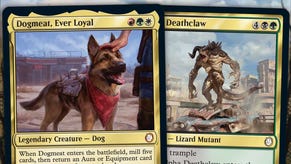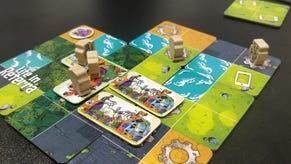D&D's answer to American Idol changed the RPG - and its winner's life - forever
You could say it was open to ‘Ebberyone’.
It’s early August of 2002 and freelance writer Keith Baker is returning, with his wife and parents, from a family vacation in the charming coastal town of South Haven, Michigan. With an hour to go before their flight home, Baker’s wife decides to do something extremely common for a time when portable phones were something of a luxury. She uses a payphone to dial into their landline’s answering machine and check on the last week’s worth of messages.
What follows is a desperate sprint around Michigan, with less than an hour to spare, in search of two things. The first is an internet cafe that will allow them to print out a form. The second is a shipping service capable of guaranteeing that the now filled-out form reaches the offices of Wizards of the Coast in Renton, Washington, by the very next day.
As it turned out, almost immediately after departing for their little getaway, Baker had received an email from the team behind Dungeons & Dragons, informing him that his pitch for third-edition D&D’s new, official campaign setting had seen him selected as one of 11 semi-finalists. When Baker didn’t reply to this email, they naturally phoned him and left a message, explaining that there was a hard deadline to return the accompanying form. That deadline was the day Baker was due to arrive home via his overnight flight. It came as quite the shock, as he’d all but forgotten about the whole affair.
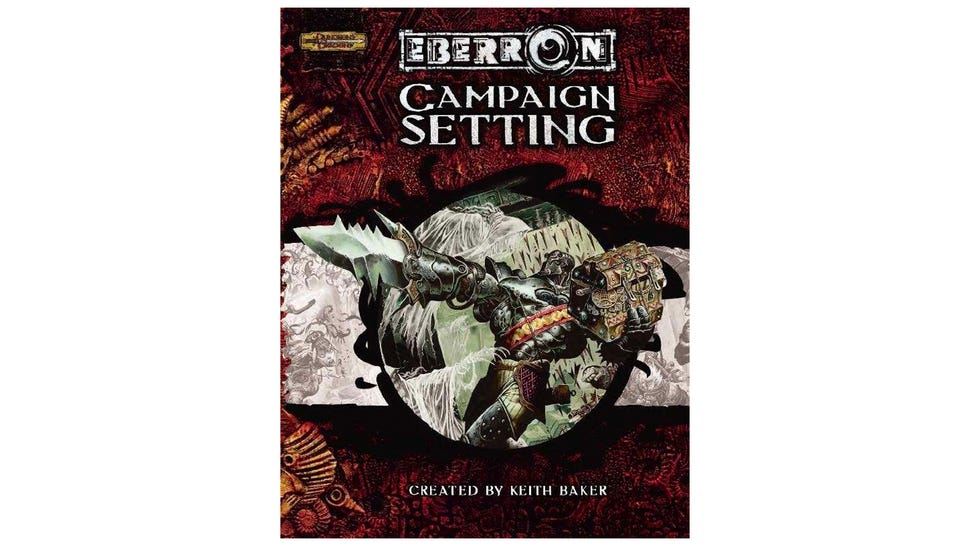
Having grown disillusioned with his employment as a PC game designer, Baker had made the difficult decision, just a few months prior, to ditch his digital job and have a go at freelance writing. He’d since been snapping up whatever work he could, making a few cents per word. He’d found irregular employment working on adventure modules and supplements for small companies such as Goodman Games and Green Ronin Publishing. Having seen on roleplaying website EN World that Wizards was looking for a new campaign setting, Baker had simply sent off his ideas, each consisting of a single-page pitch, and then moved on to the next task.
I kept thinking ‘They picked Thrilling Tales? Really?’
The pitch itself needed to be simple and short. There were a handful of questions to answer - things like ‘How does magic work?,’ ‘Who are the heroes?’ and ‘Who are the villains?’ - topped off with a few paragraphs about the world itself. “I didn’t really think I had a chance,” explains Baker. Discussing the whole affair nearly two decades later, he vividly recalls not only his amazement at being picked, but also the fact that they chose this particular one of his submissions. “The flight home was just a stunning, mind-blowing experience. I kept thinking ‘They picked Thrilling Tales? Really?’”
Baker had submitted seven ideas to Wizards of the Coast. The one selected, which would eventually go on to become Eberron, was the last of them. Typed up on a whim, more for fun than anything else, Baker felt that it was the least promising of them all. It was titled Thrilling Tales of Swords & Sorcery and described as “The Lord of the Rings meets Raiders of the Lost Ark in the Maltese Falcon”. Furthermore, he added in a little passage, replete with pulpy narrative, describing a dwarven detective, which began: “he was sharpening a dagger when she walked in. She was three feet of trouble, the most beautiful lady he’d ever seen, but he could see she was in danger.” It would be this very sentence, added almost in jest, which would catch the eye of Wizards of the Coast’s then-head of R&D, Bill Slavicsek.
A couple thousand miles away, on the USA’s west coast, Slavicsek and the small team at Wizards had received over 11,000 submissions, which was about 9,000 more than they’d expected. As the head of R&D, he’d been responsible for the idea of sourcing a new setting from the community, but it was much less hair-brained than retrospect might make it seem. “We had a ton of campaign worlds and they were all cool and exciting” says Slavicsek. “But here’s the thing: there were a lot of them and they were splitting our audience and hurting our sales.”
We had a ton of campaign worlds and they were all cool and exciting. But they were splitting our audience and hurting our sales.
By the time Third Edition launched in 2000, D&D had a vast array of popular campaign settings. There were the grand, old, high fantasy universes like Greyhawk, Dragonlance and the Forgotten Realms. Then you had your more specialised settings - the horror of Ravenloft, for example, and the pulpy, post-apocalyptic Dark Sun. Then you had stuff that was just existentially weird, such as Spelljammer and Planescape. “We had to refocus things,” Slavicsek explains, “and to do that, we had to close down a lot of those lines.”
Greyhawk was chosen as the official setting for D&D 3E, but it quickly became apparent that something new had to be introduced. Those old worlds were designed for the much more mechanically-driven and combat-focused editions of Advanced D&D. Third Edition was all about skills, roleplaying and character development. Slavicsek knew that they needed “something built from the ground up to make use of the third-edition rules''. It’s easy to imagine why, when Baker’s pitch for a swashbuckling, neo-noir world arrived on his desk, he got excited.

It wasn’t just Baker in the running to be the new prince of polyhedral dice. Almost 3,000 miles away, Manhattan-based Rich Burlew had also received a phone call - except, unlike Baker, he’d been around to pick up. Burlew was much less shocked by his sudden success. “I’d always thought my biggest obstacle would be getting noticed in an endless sea of ideas,” he explains. “The fact that I’d gotten their attention meant that I had a real shot. It felt more like a well-earned victory than a winning lottery ticket.”
It felt more like a well-earned victory than a winning lottery ticket.
Burlew’s path to semi-finalist was startlingly similar to Baker’s in many ways. The tragic attacks of September 11th had caused him to lose his job in Lower Manhattan and he’d spent the first half of 2002, in his own words, “alone and unemployed”. So he did what any sensible unemployed loner does: surfed the web for hours every day. Becoming deeply involved with the Wizards of the Coast message boards, Burlew learned about the contest a mere ten minutes after it was announced.
He submitted five different entries, two of which were his actual homebrew campaign worlds, of which one would eventually be selected. His primary concern was getting noticed: “I knew that there was going to be a massive number of entries and I thought that they were probably going to have to skim while reading, just to get through them all.” His solution to this was to lay off the minutiae. “I wrote a lot more about look and feel and atmosphere than hard details about people, places, and things. I guess the fact that I’d once worked in an advertising office probably ended up helping me more than my gaming experience.”
Nine other semi-finalists made it through to this stage, most of whom have been lost to time. Those lucky 11 were then tasked with expanding their settings, each creating a ten-page version. Of those, three were purchased by Wizards of the Coast for a whopping $20,000, the equivalent of roughly $30,000 in 2021. For a struggling freelancer writing for pennies a word and an unemployed enthusiast who’d lost their job, it was a life-changing injection of cash.
The amount of money being offered was wildly out of proportion with the amount of freelance work being contracted.
But it wasn’t a wholly positive experience. From the bowels of the D&D community came rumblings of discontent. While Wizards of the Coast was very careful to officially term the process an ‘open call’ for writers, few saw it as anything other than a homebrew contest with a big chest full of cash for the winner. “Everyone I knew personally, who submitted an entry, understood it as a contest right from the jump,” explains Burlew. “The amount of money being offered was wildly out of proportion with the amount of freelance work being contracted. If they wanted it to be a legitimate call for freelancers, they could have structured the whole thing without any mention of money, then negotiated appropriate rates when hiring the selected authors. Instead, the money was front and centre in every announcement.”
The corrupting influence of such a large amount of cash began to breed conspiracy theories and accusations of cronyism. The fact that even Wizards of the Coast employees, such as famed world-builder James Wyatt, had entered the contest caused many to feel as though the whole thing was in bad faith. When it came time to announce the semi-finalists and it was revealed that Baker was already an established freelancer and the third eventual finalist, Philip Nathan Toomey, was also a scholar, many began to call shenanigans. Both Burlew and Baker recall one particular rumour, prevalent at the time, that Keith Baker was somehow related to Rich Baker, another Wizards employee who had been writing books and supplements since the early ‘90s. Keith still finds this quite amusing, going so far as to exclaim “I’d never even met Rich Baker!”
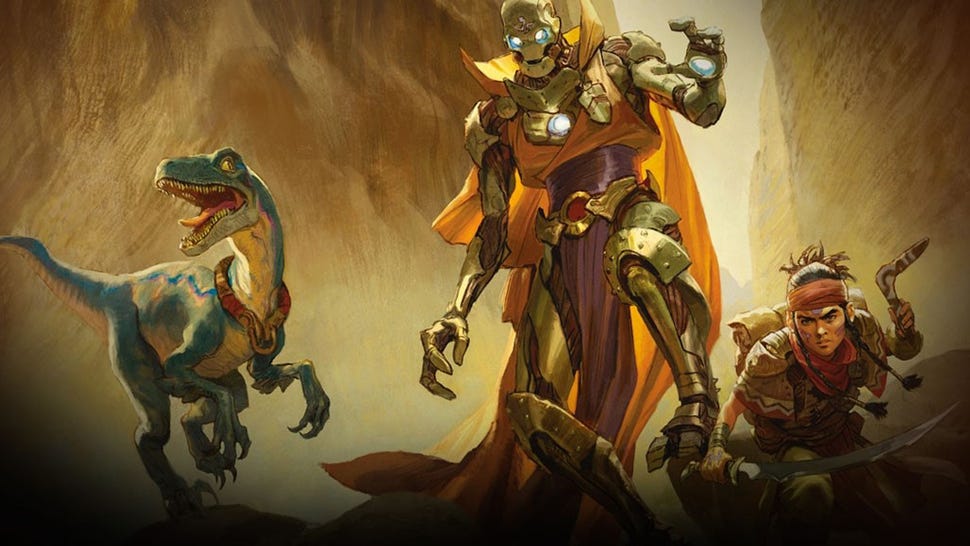
Despite this, the contest forged on and is now largely remembered for what it was - an oddity created by the coming together of two eras. The first, a period of time in which TSR, the previous owner of D&D, would ruthlessly stamp out any attempts to publish anything that even looked similar to its fantasy RPG (even having a pop at Magic: the Gathering at one point). This was a policy made possible, in part, by the ease of controlling your intellectual property in a pre-internet era. The second, a time of community-driven experimentation, tempered in the forges of the intergalactic superhighway, fed by a bold, new edition of D&D that focused much more heavily on roleplaying and world-building.
While many will look back on this often-forgotten event as a seminal moment for the hobby, it’s easy to overlook just how drastically it changed the lives of those involved. For Baker, a second cheque, this time for $100,000, meant several years’ worth of income and a lifetime of recognition. “Suddenly people knew who I was,” he explains. Almost overnight, Baker went from struggling to get low-paying gigs to being the guy who made Eberron. He would go on to have a very successful career as a writer and designer of games, famously creating the much-loved card game Gloom. In 2014, he co-formed indie tabletop studio Twogether Studios, with his wife Jennifer, and has since released several successful games. Eberron would go on to become the setting for a number of other works, including the PC game Dungeons & Dragons Online. It’s still a core setting for the pen-and-paper game as well, with an updated book for D&D 5E released in late 2019.
For Burlew, the whole affair was arguably even more life-altering. “It gave me a degree of confidence I’d never had before in my writing abilities,” he explains. “Growing up, I had always been the art guy, which led to my career as a graphic designer. I’d never written seriously before, and now with words alone I had somehow gotten past tens of thousands of other gamers. That led me to start Giant in the Playground as a place to publish my further work, and trying to find recurring content for that website led me to start my comic strip, The Order of the Stick.” The comic has now been running non-stop for 15 years and is an instantly recognisable zeitgeist for commentary on modern D&D.
As for Slavicsek, his career would remain very much in the realms of high fantasy, going on to work for Zenimax Online Studios as a writer for The Elder Scrolls Online. Looking back, he’s still as pleased with the results as he was in 2004: “I’m very proud of what we wound up producing. I think the legacy [of the contest] is that the company was able to work with both the fan base and a semi-pro, to create something new and exciting for D&D, all at a time when we weren’t sure we were gonna be able to pull that off.”
Indeed, it’s hard to believe that for a brief moment, almost 20 years ago, Wizards of the Coast decided to just deem someone’s homebrew an official setting. While there was certainly more nuance to it than that, it’s impossible to deny that this is exactly what became of Dungeons & Dragons’ search for a new flagship campaign world. It is, of course, the dream of many budding dungeon masters that their world might one day be seen on a grand scale. For one young freelancer, an entire generation ago, that dream became a reality.
